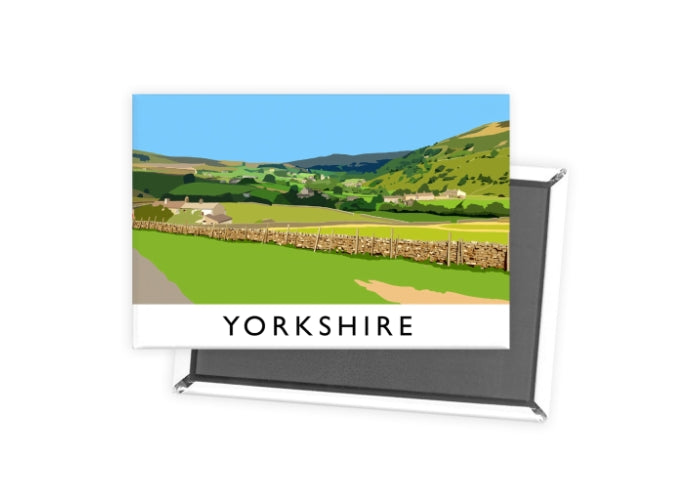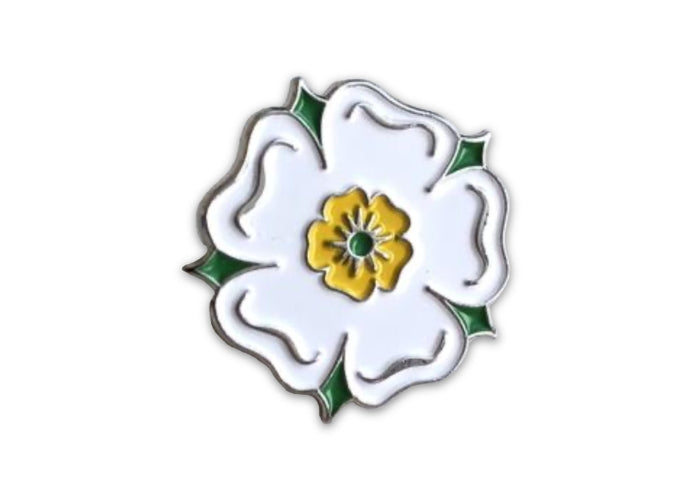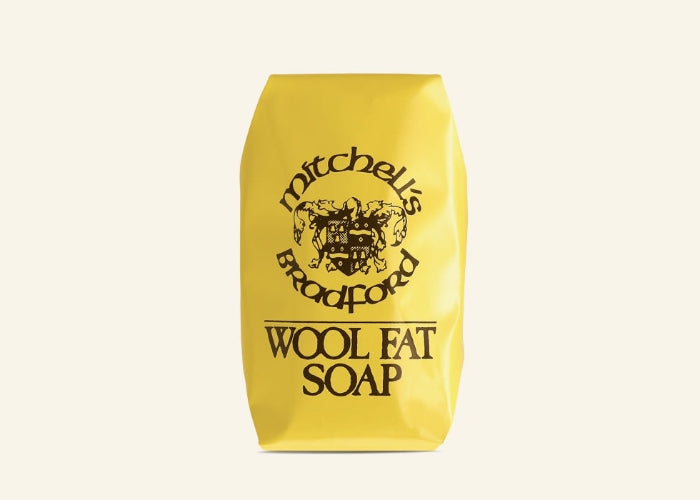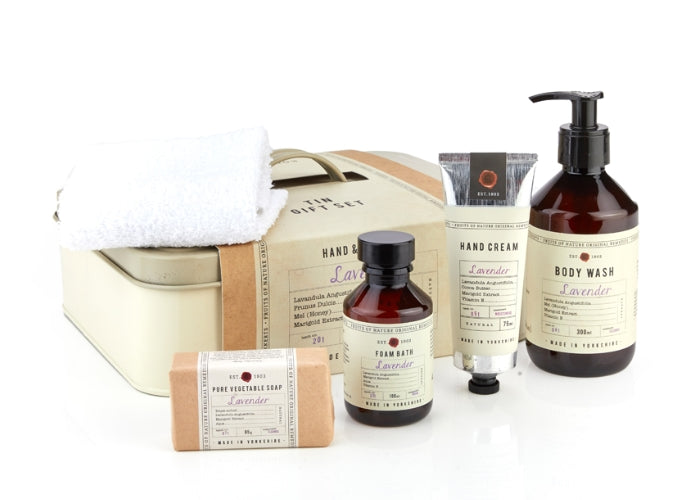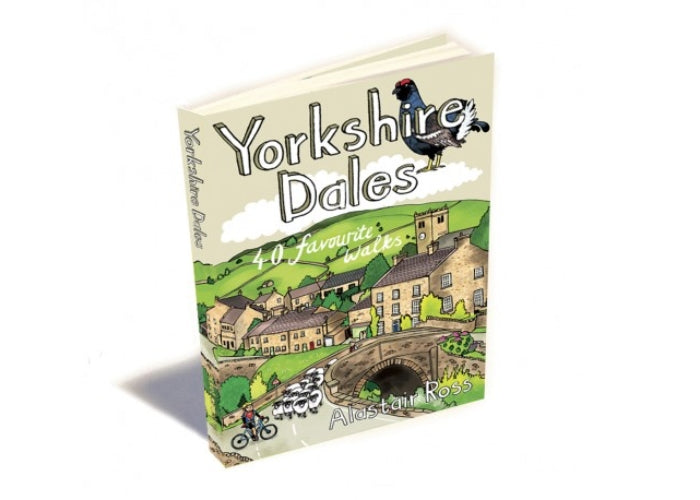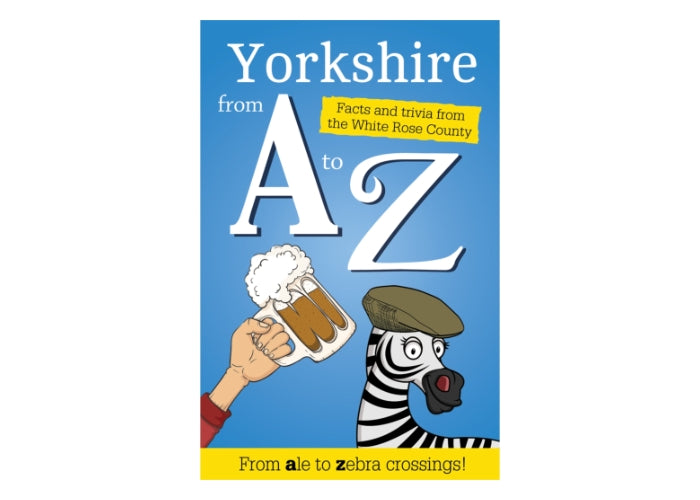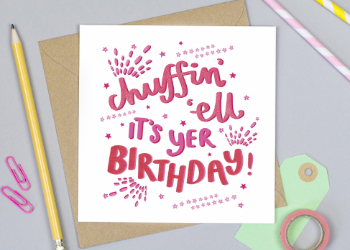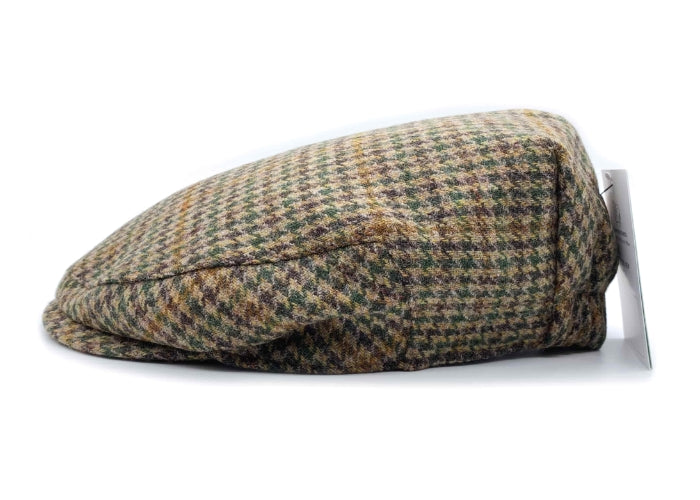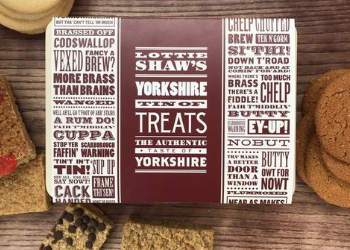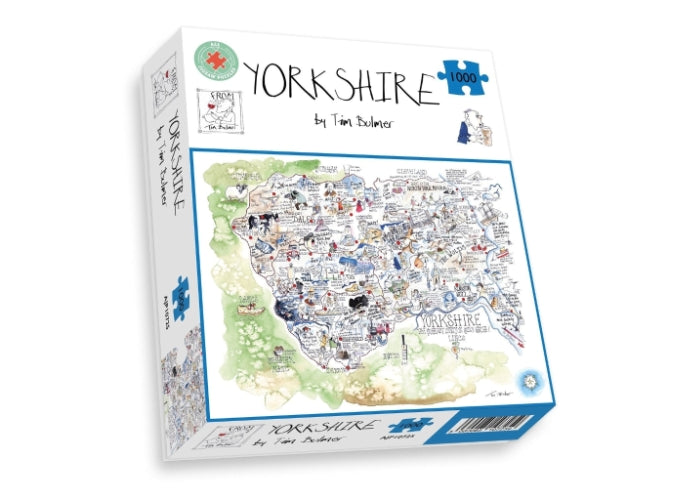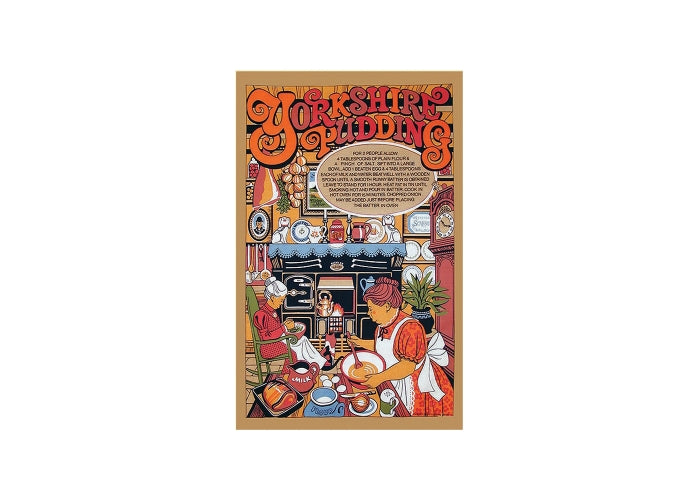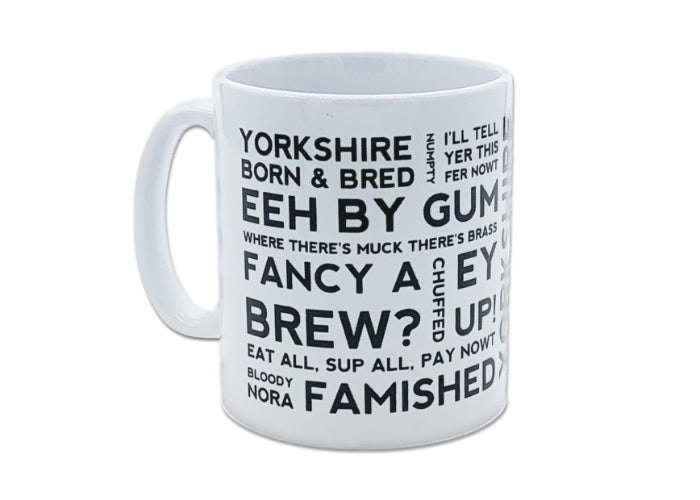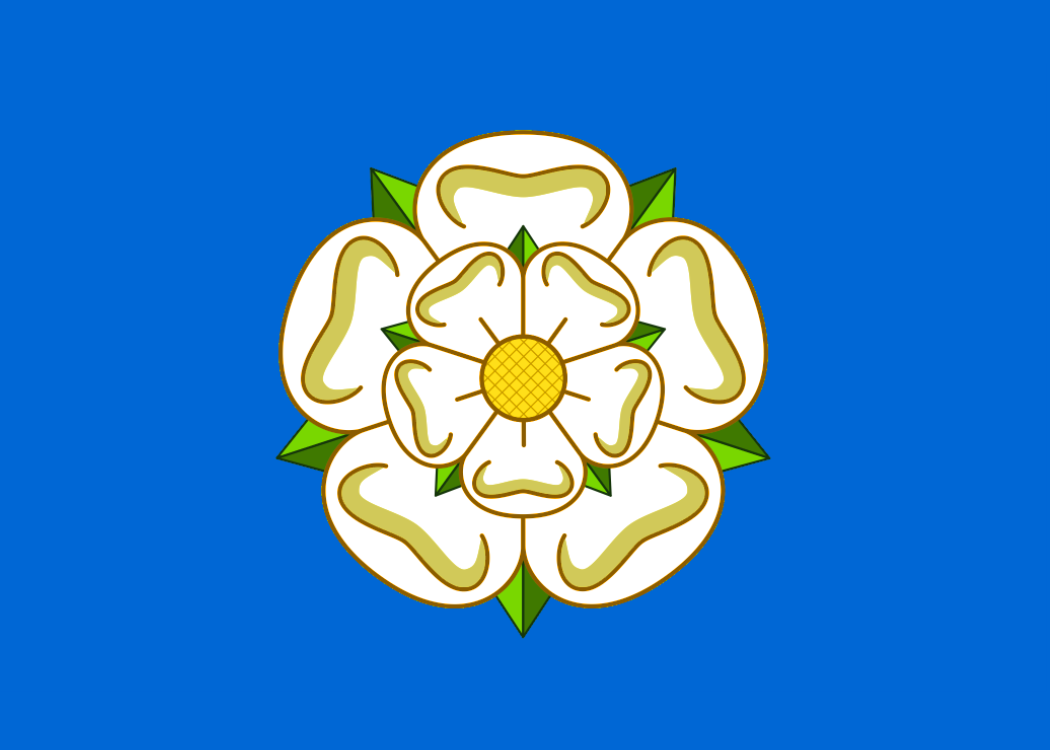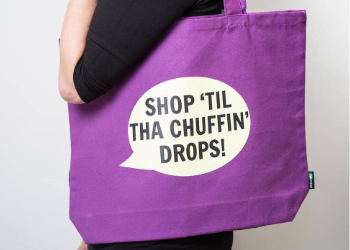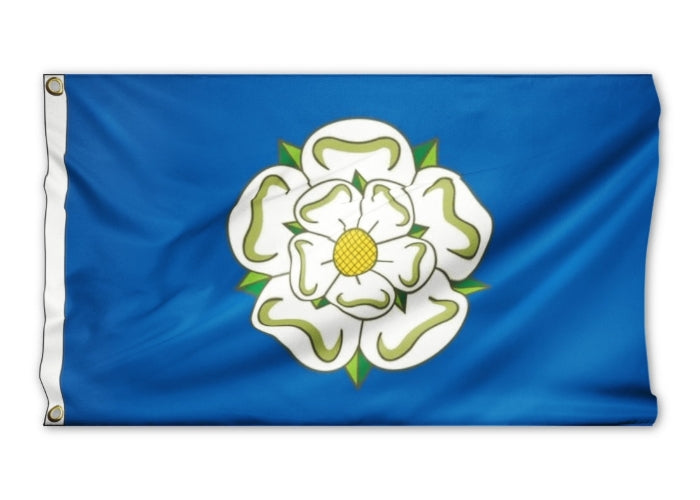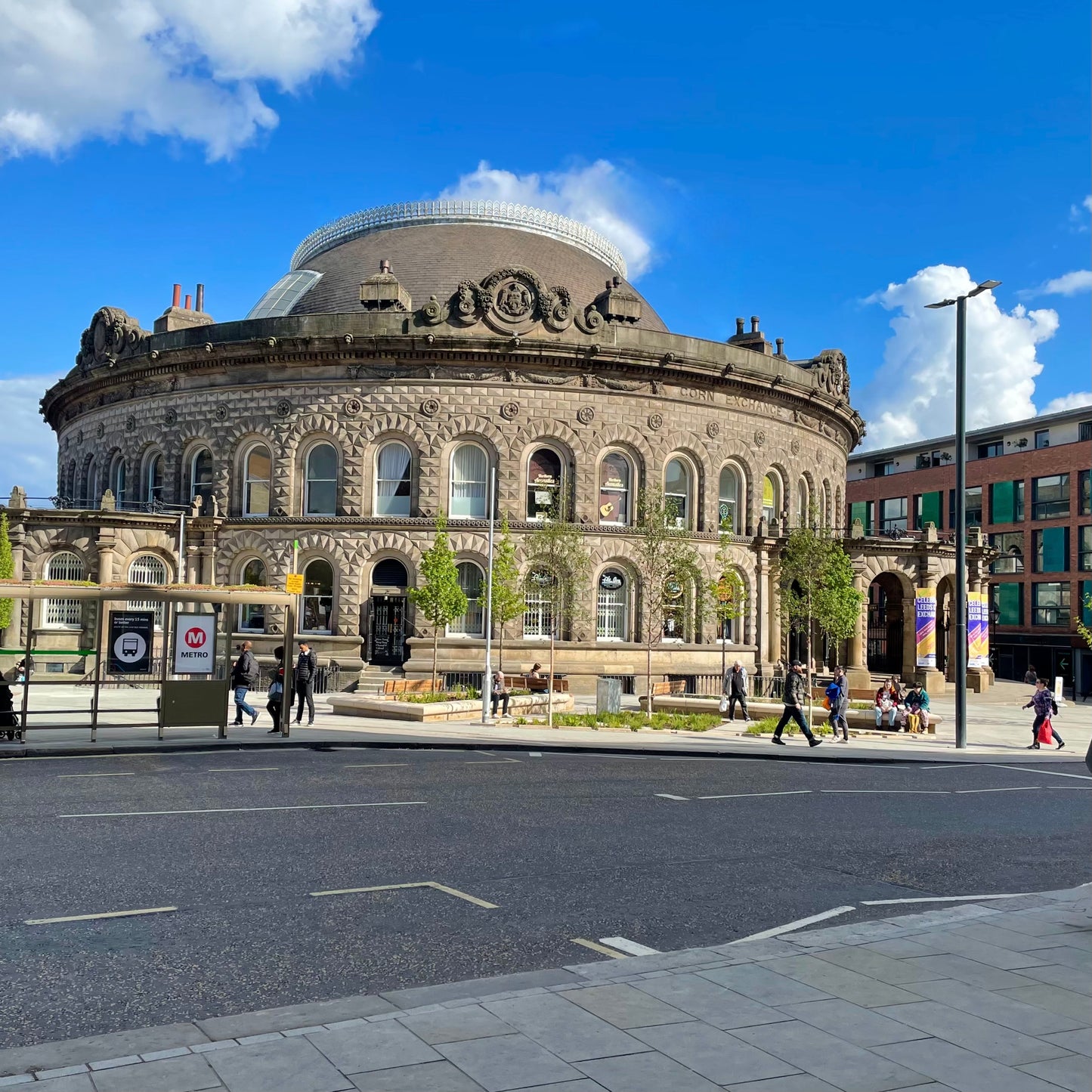
The Corn Exchange is a staple of Leeds' architecture, and we aren't just saying that because we call it home! It's a Grade 1 listed building with over 160 years of history behind it. It has housed corn traders, animal shows, night clubs and shops and it is still standing strong, an iconic part of Leeds' skyline.
The Corn Exchange on Call Lane is not the original corn exchange Leeds built, in fact, the first corn exchange was built in 1828, looking down over Briggate from its position on the Headrow. It also housed a hotel, tavern and four shops alongside a warehouse and the offices used by the corn traders.
During the 1840s and 50s, the council invested a lot of money into improving Leeds' market facilities, but they overlooked the corn traders. After over 20 years in their small Headrow building, they were starting to feel neglected so they petitioned the council to do something about it.
The council listened and in 1859, they decided it was time to build a new corn exchange for both the sack market and the sale of grain by sample. In 1860 an architectural competition was held, Cuthbert Bodrick, who had also designed the town hall won with his dome design inspired by the Bourse de Commerce in Paris. This design allowed for plenty of natural light while also avoiding sunlight directly hitting the corn and making it appear a different colour.
The design was wide and open with large glazed panels in the roof to provide the perfect lighting for determining the quality of the grain. It was light and airy with the trading floor being open and well lit. The beamed ceiling was (and still is) something to be marvelled at. Even today it feels stylish and modern as well as historic and grand simultaneously. The exterior is equally impressive, the domed roof, round sandstone walls and arched windows are distinct and it stands proud, clearly visible from Duncan Street and Boar Lane.
There were plans for a third floor which were rejected by the council, despite this, the Exchange could house 59 corn factors offices and an open area large enough to fit 170 corn factors stands.
The foundation stone was laid on 7th May 1861, with procession bands and a celebratory dinner commemorating the beginning of the project. Building was expected to take seven months with it opening in 1862, however, construction overran and it didn't open until 28th July 1863 and it wasn't until February 1864 that construction was completed. Four years after the new corn exchange was finished the old Headrow building was demolished to make space for further development.
The Corn Exchange was built with the hope that it would make Leeds one of the principal corn markets in the north of England, and that is what happened! Through the rest of the 19th century, business flourished for the Corn Exchange. During this time more grain was being imported from America, Canada, and Europe and thanks to its rail and water connections it became a grain trading centre of national importance. With the Corn Exchange's success there were further grain-related industries popping up in the surrounding area.
The Exchange doubled as a leather market from 1903, and also hosted animal shows, but its main purpose was as a corn market. Every Tuesday corn traders would gather to sell and buy their wares.
The Corn Exchange continued to trade into the 1950s, but in the 1960s the number of traders began to drop dramatically due to the decline in agriculture. By the 1980s, there was only a few corn traders in the offices. Looking to the future of the building, Leeds Civic Trust proposed turning the building into a concert hall but nothing came from this plan.
Instead in 1988, Leeds City Council gave a 999-year lease on the building to Speciality Shops, a London firm. They took the building and converted it into a shopping centre. An opening was cut into the trading floor and new stairs were installed to allow visitors easy access to the basement and the balcony.
Once the renovations were complete the Exchange was reopened in 1990.
Despite the shift in purpose, the corn traders were still allocated space for them to meet and trade every Tuesday. They continued to trade at the Corn Exchange until around 1994 when they no longer gathered and corn trading ceased in the building after 131 years.
The Corn Exchange lease was transferred to Arcadia, they made further transformations in the 2000s to marry the Corn Exchange's architecture with a modern shopping experience.
Over the past couple of years, there have been major changes to the roads outside the Corn Exchange as part of the Connecting Leeds scheme, a project to better connect Leeds and to encourage pedestrians and cyclists over the use of cars. Construction is now complete and the Corn Exchange is now framed by the Corn Exchange Square, an area of wide pavements, seating, a space for events and blooms of greenery to welcome us into summer. It's a brilliant change to the city and another note in the building's history.
Share your memories of the Leeds Corn Exchange below and explore our collection of prints and magnets featuring the Corn Exchange here.

